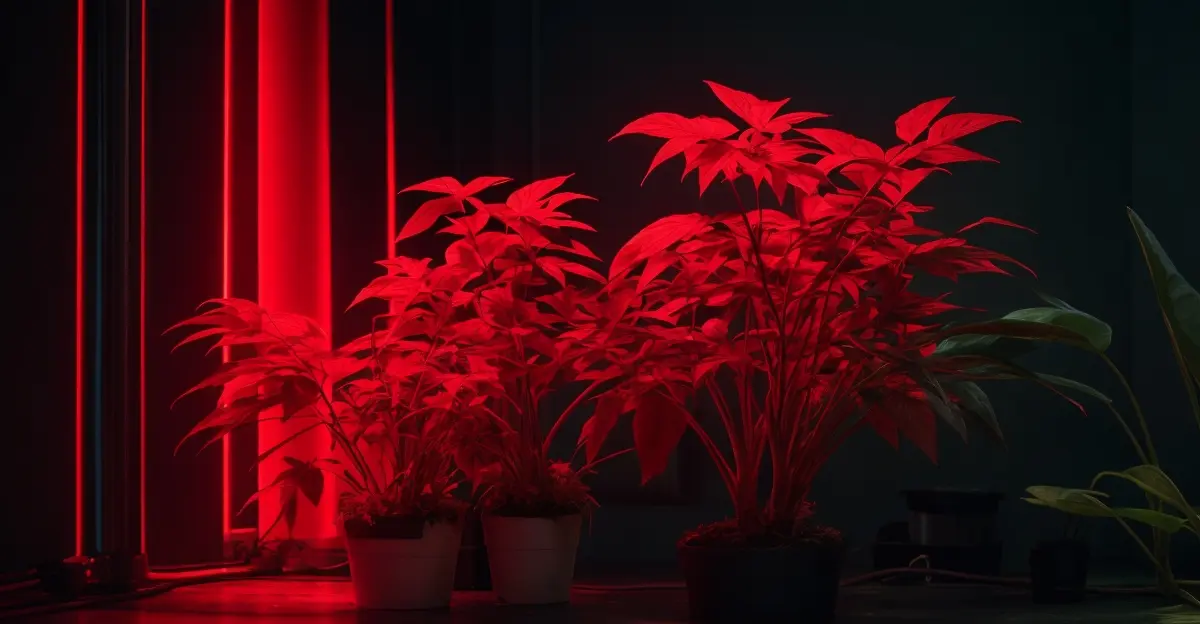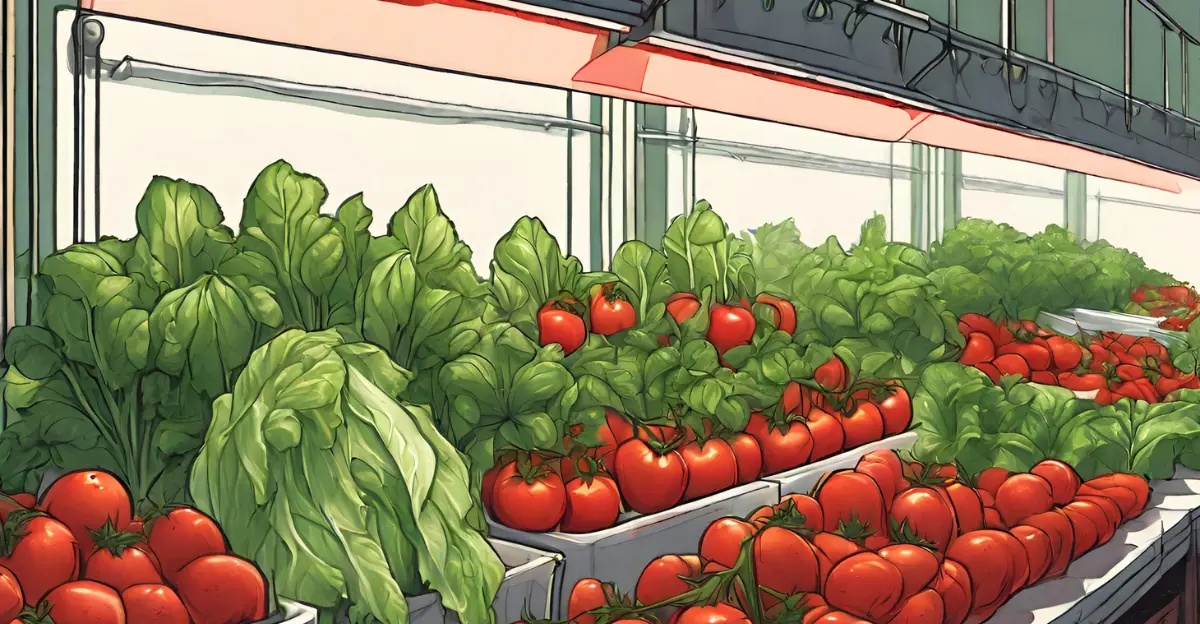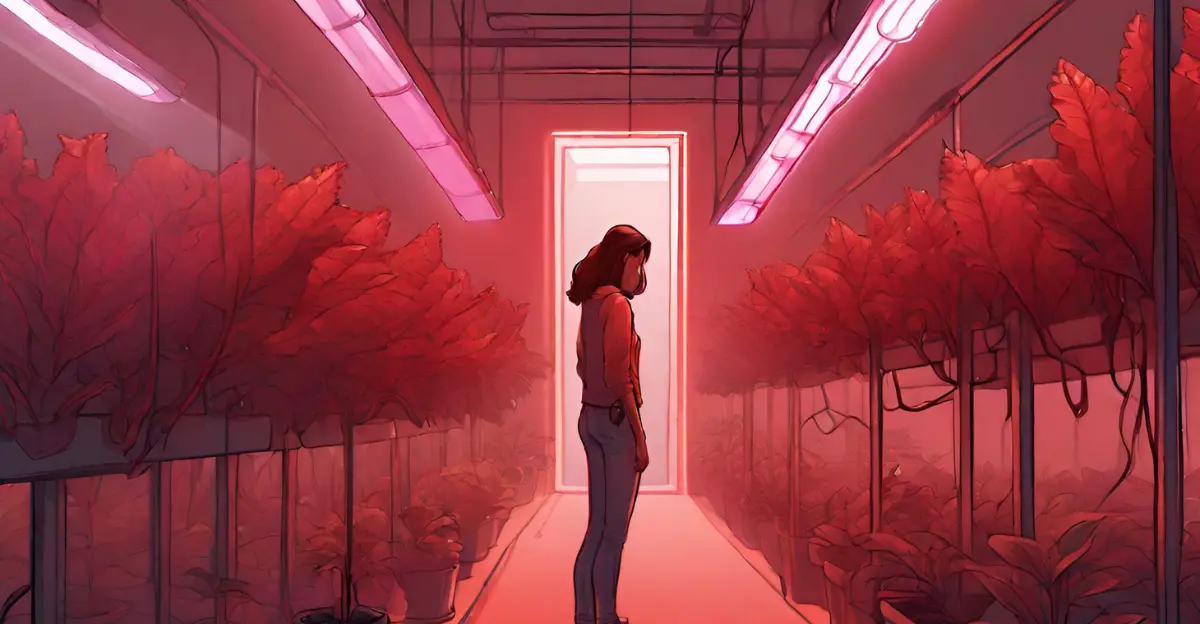Red Light and Plant Growth: Is It Good for Your Plants?

This article uncovers everything you need to know about red grow light and its effects on your indoor plant(s) growth.
I’ll break down exactly how quality red lighting provides the fuel for faster, healthier plant development.
Let’s dive right in.
Quick Key Takeaways
Why Red Light Matters for Plants

Red light wavelengths ranging from 600-700 nm are a powerful driver of plant health and productivity.
By fueling photosynthesis, red photons provide the foundation for transformative growth effects.
Studies showed increased photosynthetic efficiency under supplemental red LEDs, but the extent of the increase varies.
Optimized red light conditions enabled increased biomass production in some lettuce and herb species in certain trials.
Red light also boosts key compounds like antioxidants and anthocyanins, making plants more resilient to stresses like drought.
It alters architecture—stimulating cell expansion and elongation while allowing for vertical growth.
Red Light Effects on Key Plant Growth Factors
Growth Rate and Yields
Studies show that red light, especially at peaks of 640-680 nm, leads to faster plant growth rates and increased yields in many species.
In trials, strawberry plants produced a whooping 372-989% more fruits (16-hour photoperiod) under red LEDs compared to other light treatments.
Red light boosts photosynthesis, providing the fuel for prolific plant development.
Plant Health and Hardiness
By stimulating key enzymes and compounds related to photosynthesis, respiration, and nitrogen metabolism, red light enhances the health and resilience of plants.
Under red wavelengths, plants exhibit higher antioxidant production, boosting their defenses against disease and environmental stresses (source).
Red light also elevates the expression of Rubisco and other enzymes central to carbon fixation and sugar production, enabling robust, vibrant growth.
Flowering and Fruit Production
The unique phytochrome system which regulates blooming is highly sensitive to red light.
In species like strawberries and cannabis, red wavelengths trigger the shift from vegetative to reproductive growth.
Red light also prolongs flowering in long-day plants like spinach.
Across many trials, red LEDs increased flowering plant crown diameter and biomass accumulation.
According to this YouTube video, they also delivered earlier first harvests, with fruiting accelerated by up to 21 days under supplemental red light.
Morphology Changes
Red light amplifies cell elongation and expansion, often leading to taller plants with thicker stems and leaves (source).
This vertical growth optimizes light capture for middle and lower leaves.
Research studies also found red light enables plants to develop thicker, larger leaves along with denser foliar canopies.
For instance, Vine plants under red light exhibited increased side shoot development and altered branching patterns.
Tailoring Red Light to Different Plant Types

When it comes to red light, one spectrum does not fit all plants.
Depending on whether you’re growing leafy greens, fruiting tomatoes, pungent herbs, or vivid ornamentals, you’ll want to fine-tune the intensity and blend of those magical red photons.
Leafy Plants Love A Red Boost
For plants like lettuce, kale, and spinach, red light intensifies the green growth.
Studies found over 2x more leaves developed on lettuce under red LEDs compared to blue light alone. Yet too much red causes undesirable stretching in delicate greens.
The sweet spot?
Balance red dominance with 20-25% blue light. This stimulates dense, compact leafy growth without legginess.
As a bonus, alternating red and blue light increased sugars, vitamins, and antioxidants in lettuce over static red or blue alone (source).
That makes leaves extra nutritious for us salad lovers!
Fruiting Favourites Want Far-Red Too
Peppers, tomatoes, and berries bask under red light when setting those precious fruits. But counterintuitively, increasing yields also requires the elusive far-red spectrum.
This article showed that far-red light enabled June-bearing strawberries to initiate flowers and fruits a full 18 days earlier than short days alone.
For optimal fruit production, use adjustable LEDs to hit the right red/far red balance for your crops.
Herbs Thrive On Red Plus Green
While never being the best man at the wedding, green wavelengths do prevent nitrate accumulation in vulnerable herb species.
While red light is crucial for herb growth, too much causes undesirable stretching.
For compact, nutrient-dense herbs, blend mostly red with about 30% blue and 10% green light from full-spectrum LEDs. Then watch your basil and oregano flourish!
Ornamentals Want That Red Magic
Vivid blooms like roses, orchids, and petunias depend on red light’s flowering effects. Red photons fuel both biomass accumulation and the hormonal pathways initiating those glorious blooms.
Of course, stretching can be an issue here too.
Supplement red dominance with ample blue light for compact, well-shaped ornamentals.
Considerations When Using Red Light

If you’re looking to maximize the growth-boosting effects of red light on your plants, here are 3 key factors to keep in mind:
Potential for Abnormal Elongated Growth
Too much red without sufficient blue light can lead to excess vertical stretching in plants, reducing structural integrity and quality.
Carefully balance your red and blue wavelengths to enable vigorous yet compact growth.
Interactions with Far-Red Light
While some far-red light paired with red photons promotes growth, excess far-red suppresses flowering and causes abnormal elongation without yield gains.
Coordinate red and far-red ratios to harness optimal shade avoidance responses for your goals.
Influence of Exposure Duration and Intensity
Both insufficient and excessive red light can negatively impact photosynthesis, respiration, and morphology in plants.
Dial in the right daily light integral and peak intensities to maximize productivity without abnormal changes.
Final Words
In short, red light works wonders for thriving plants.
By driving photosynthesis, it fuels faster growth, boosts health, elevates yields, and packs in helpful compounds.
However these rewards require properly tailored intensities, spectra, and exposure to avoid unwanted stretching or stress.
Start small with adjustable full-spectrum LEDs offering ample red. Then watch your crops flourish under this magical light.
FURTHER READING: Purple Grow Light vs White Light: The 2024 Expert Guide
Meet your guide
Dhruvir Zala